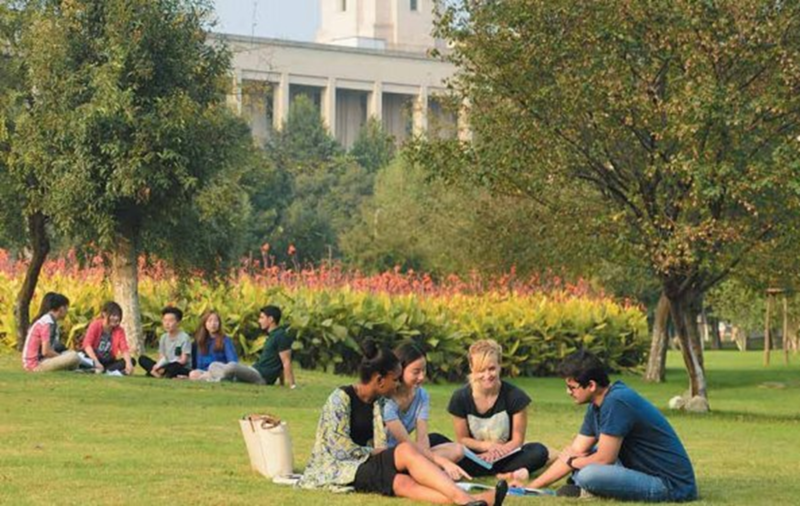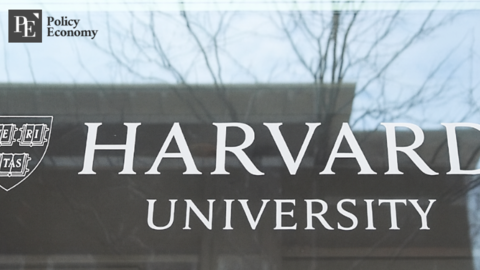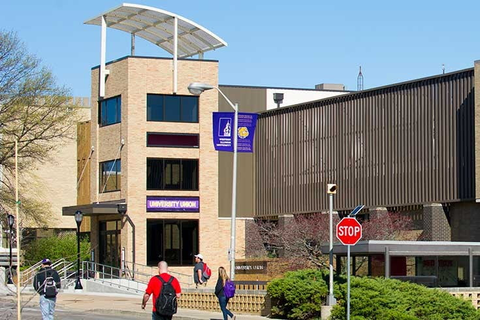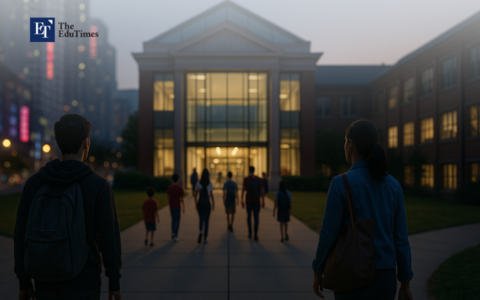Global Classrooms: The Rise of International Branch Campuses and the Future of Higher Education
Input
Modified
The Global Expansion of Universities Through IBCs The Emergence of International Branch Campuses Challenges Facing IBCs and Strategies for Sustainable Growth

The Global Expansion of Universities Through IBCs
Universities are expanding globally through international branch campuses (IBCs), offering recognized degrees and fostering collaboration. While increasing accessibility, IBCs face financial, cultural, and ethical challenges, requiring a balance between growth and responsibility.
The University of Exeter's expansion into Egypt through a partnership with Ain Shams University in Cairo is one of the most significant recent developments in international branch campuses. This is a significant milestone in the globalization of UK higher education, as it is the first Russell Group university auxiliary campus in Africa. The primary objective of this expansion is to encourage industry-focused research collaborations, provide globally accredited undergraduate and postgraduate programs, and support Egypt's Vision 2030 for higher education reform. Furthermore, the partnership aims to introduce interdisciplinary programs that are specifically designed for Egyptian and international students, enhance labor market opportunities, and bridge skills gaps. On the other hand, some critics contend that these initiatives perpetuate Western dominance in global education, which could potentially restrict the ability of local universities to establish their own international recognition.
Globalization, technological advancements, and the increasing demand for quality education have all contributed to the substantial transformations that higher education has undergone in recent decades. Universities, which were previously restricted to a single location, are now broadening their scope by establishing multi-campus structures in various cities, regions, and countries. This expansion is motivated by the necessity to enhance institutional reputation, attract diverse student populations, increase accessibility, and generate additional revenue streams.

The Emergence of International Branch Campuses
The emergence of international branch campuses (IBCs) is a significant trend within this transformation, in which universities establish fully operational campuses in foreign countries. This model enables institutions to enhance their global presence, recruit international students, and cultivate academic collaborations. However, IBCs not only offer thrilling prospects, but they also present significant obstacles, such as financial risks, regulatory obstacles, cultural adaptation, and concerns regarding educational inequality. It is imperative to comprehend the various types of campuses, their functions in higher education, and the broader implications of their expansion in order to effectively navigate this changing environment.
The central hub of a university is the main campus, which is home to its essential academic programs, research facilities, and administrative offices. It is essential for the implementation of policies and governance, providing the most comprehensive academic resources, faculty expertise, and extracurricular activities. The strength of a university's primary campus is frequently associated with its prestige, which in turn affects enrollment and global rankings.
Conversely, satellite campuses, which are also referred to as regional or commuter campuses, are extensions of the primary university within the same country. These campuses provide specialized programs, facilitate students who prefer to study closer to home, and assist in serving specific communities. Some satellite campuses are semi-independent, offering programs that are distinctively tailored to the requirements of the region, while others operate semi-independently and share faculty, administration, and funding with the main institution. Satellite campuses may not always offer the same level of research opportunities, student engagement, or campus resources as the primary university, despite the fact that they increase accessibility.
International branch campuses (IBCs) are autonomous university extensions that operate in foreign countries, in contrast to satellite campuses. While maintaining academic ties to their parent institution, these campuses frequently possess their own faculty, administrative teams, and infrastructure. IBCs are an appealing alternative for individuals who are interested in an international education and wish to circumvent financial and logistical obstacles. They enable students in the host country to obtain a degree from a prestigious foreign university without the necessity of traveling abroad. The degrees conferred by IBCs are typically accredited by the host institution, which guarantees the preservation of institutional prestige and academic high standards.
There are numerous factors that contribute to the global expansion of branch campuses. The demand for high-quality education is on the rise, particularly in regions where local universities are unable to meet enrollment requirements or lack the prestige of Western institutions. Furthermore, universities perceive international expansion as a solution to the challenges associated with domestic funding, enrollment limits, and increasing operational expenses. Institutions also endeavor to attract top faculty talent, strengthen global partnerships, and foster research collaborations. Nevertheless, the rapid expansion of IBCs has raised concerns regarding their impact on local higher education systems, financial sustainability, and accessibility, despite these advantages.
South Korea has also become a significant host for foreign university branch campuses, currently hosting three US-based institutions and one Belgian university. The constant growth in enrollment in IBCs is a reflection of the growing demand for American education in South Korea, which is a result of the country's strong emphasis on global competitiveness and higher education. Nevertheless, South Korea is confronted with a demographic challenge, as the number of college-age students is anticipated to decrease from 450,000 in 2020 to 280,000 by 2040. This decline raises concerns regarding the long-term sustainability of IBCs, which are financially dependent on tuition revenue. The hazards associated with this model were underscored by the withdrawal of numerous European universities that had previously established campuses in South Korea, citing financial difficulties and insufficient enrollment.
Temple University Japan (TUJ) is one of the most successful international branch campuses in Japan, as the country has adopted a more selective approach to hosting IBCs. Government recognition, the capacity to sponsor student visas, and a diverse student body have all contributed to the success of TUJ, which has been in operation for more than 40 years. TUJ has also disrupted the conventional flow of international education by luring American students to Japan, thereby illustrating the potential of branch campuses to function as global academic centers. Other Japanese institutions, such as Hiroshima University's partnership with Arizona State University, underscore the fact that Japanese universities are also participating in transnational education initiatives.

Challenges Facing IBCs and Strategies for Sustainable Growth
Branch campuses encounter substantial obstacles, regardless of their advantages. One of the most pressing concerns is financial sustainability, as IBCs are predominantly tuition-dependent and necessitate consistent enrollment to remain viable. Branch campuses are required to negotiate foreign regulatory frameworks and financial constraints, in contrast to main campuses, which frequently receive government funding, alumni donations, and research grants. The necessity of comprehensive market research and strategic planning prior to expansion is underscored by the closure of numerous international campuses by universities due to high operational costs and low student enrollment.
Another critical issue that impacts IBCs is competition from local universities and alternative education models. IBCs are less appealing to students due to the fact that many host countries already have robust domestic institutions that offer competitive programs at reduced costs. Moreover, the emergence of hybrid learning platforms and Massive Open Online Courses (MOOCs) has introduced more cost-effective and adaptable alternatives to traditional degree programs, thereby decreasing the need for students to attend physical branch campuses.
Educational inequality is an additional obstacle. Despite the assertion that IBCs are designed to broaden the availability of international education, they frequently prioritize students from affluent backgrounds who can afford the higher tuition fees, thereby providing lower-income populations with fewer opportunities. Critics contend that IBCs may exacerbate socioeconomic disparities, resulting in elite educational institutions that primarily service privileged students, rather than bridging the global education gap. Ethical concerns regarding the long-term influence of foreign institutions on host countries are also raised by concerns regarding the dominance of Western universities in local education systems.
In order to maintain their viability, auxiliary campuses must implement sustainable strategies. The financial stability of IBCs can be preserved by strengthening partnerships with domestic universities, integrating hybrid learning models, and expanding student recruitment efforts to include both local and international students. Furthermore, by providing short-term certification programs, corporate training, and online education options, they can expand their audience beyond traditional degree-seeking students. In order to ensure that IBCs operate in a manner that benefits both foreign institutions and host countries, governments and educational policymakers must collaborate to promote mutual academic development, rather than reinforcing existing inequalities.
In order to guarantee that international education serves as a catalyst for progress rather than exacerbates educational disparities, universities must meticulously balance financial ambitions with ethical obligations as higher education continues to expand globally. The future of IBCs will be contingent upon their capacity to adjust to changing market demands, cultural expectations, and technological advancements, thereby influencing the next phase of global higher education.





















